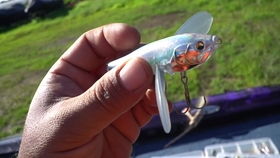Introduction:
Fishing, an ancient pastime that has stood the test of time, offers a unique blend of relaxation, patience, and the thrill of the catch. Whether you are a seasoned angler or a beginner looking to cast your line into the unknown, mastering the art of fishing can transform a simple day out into an unforgettable experience. In this article, we will delve into the essential fishing techniques and tips that can help you become a more skilled angler.

Choosing the Right Equipment:
The first step in becoming a proficient fisherman is selecting the appropriate equipment. Here are some key considerations:
- Rod and Reel: The rod and reel combination should match the type of fishing you plan to do. For instance, a spinning rod and reel are ideal for freshwater fishing, while a baitcasting setup is better suited for larger bodies of water.
- Line: The type of line you use depends on the fish you're targeting and the conditions of the water. Monofilament is versatile and easy to handle, while fluorocarbon is nearly invisible to fish and less stretchy.
- Hooks: Choose hooks that are the right size for the bait you're using and the fish you're targeting. A smaller hook may be more effective for smaller fish, while a larger hook is necessary for larger prey.
- Bait or Lures: Live bait can be effective, but artificial lures can be more versatile. Research the preferences of the fish in your area to determine the best bait or lure to use.
Understanding the Water:
Before you cast your line, it's crucial to understand the water you're fishing in:
- Current: If you're fishing in a river or stream, understand the current's flow. Fish often hold in areas where the current is slower, such as behind rocks or logs.
- Structure: Look for underwater structures like rocks, logs, or weed beds, as these can provide cover and attract fish.
- Depth: Fish may be found at different depths depending on the time of year and the water temperature. Use a depth finder to help you locate fish.
The Art of Casting:
Casting is a fundamental skill that requires practice:
- Backcast: Hold the rod with both hands, then sweep it back over your shoulder. Release the line as the rod comes forward.
- Forward Cast: Bring the rod forward with a smooth, continuous motion, allowing the line to flow out evenly.
- Accuracy: Practice casting in different directions to improve your accuracy. Aim for targets that are a few feet away to start with, then gradually increase the distance.
Presenting Your Bait or Lure:
Once you've cast your line, it's time to present your bait or lure to the fish:
- Natural Movement: Mimic the natural movement of the bait or lure in the water. For example, if you're using a worm, twitch it gently to make it look more lifelike.
- Patience: Wait for the fish to bite. Don't set the hook too quickly, as this can spook the fish. If you feel a tap or a tug, give it a few seconds before setting the hook.
Setting the Hook and Landing the Fish:
When you feel a bite:
- Set the Hook: Once you feel a fish, quickly and smoothly set the hook by lifting the rod tip to create tension in the line.
- Land the Fish: Once the fish is on the hook, reel it in slowly and carefully. Use a net to help you land the fish without causing it harm.
Safety and Etiquette:
Always prioritize safety and practice good angling etiquette:
- Safety Gear: Wear appropriate clothing and footwear, and carry a first aid kit.
- Respect the Environment: Leave no trace of your presence in the natural environment. Dispose of trash properly and be mindful of your impact on the ecosystem.
- Respect Other Anglers: Be courteous to other anglers and avoid casting into their area.
Conclusion:
Mastering the art of fishing is a journey that requires patience, practice, and a deep respect for the natural world. By following these tips and techniques, you'll be well on your way to becoming a skilled angler who can enjoy the peace and thrill of the catch. Remember, the best way to improve is through experience, so get out there and start fishing!












